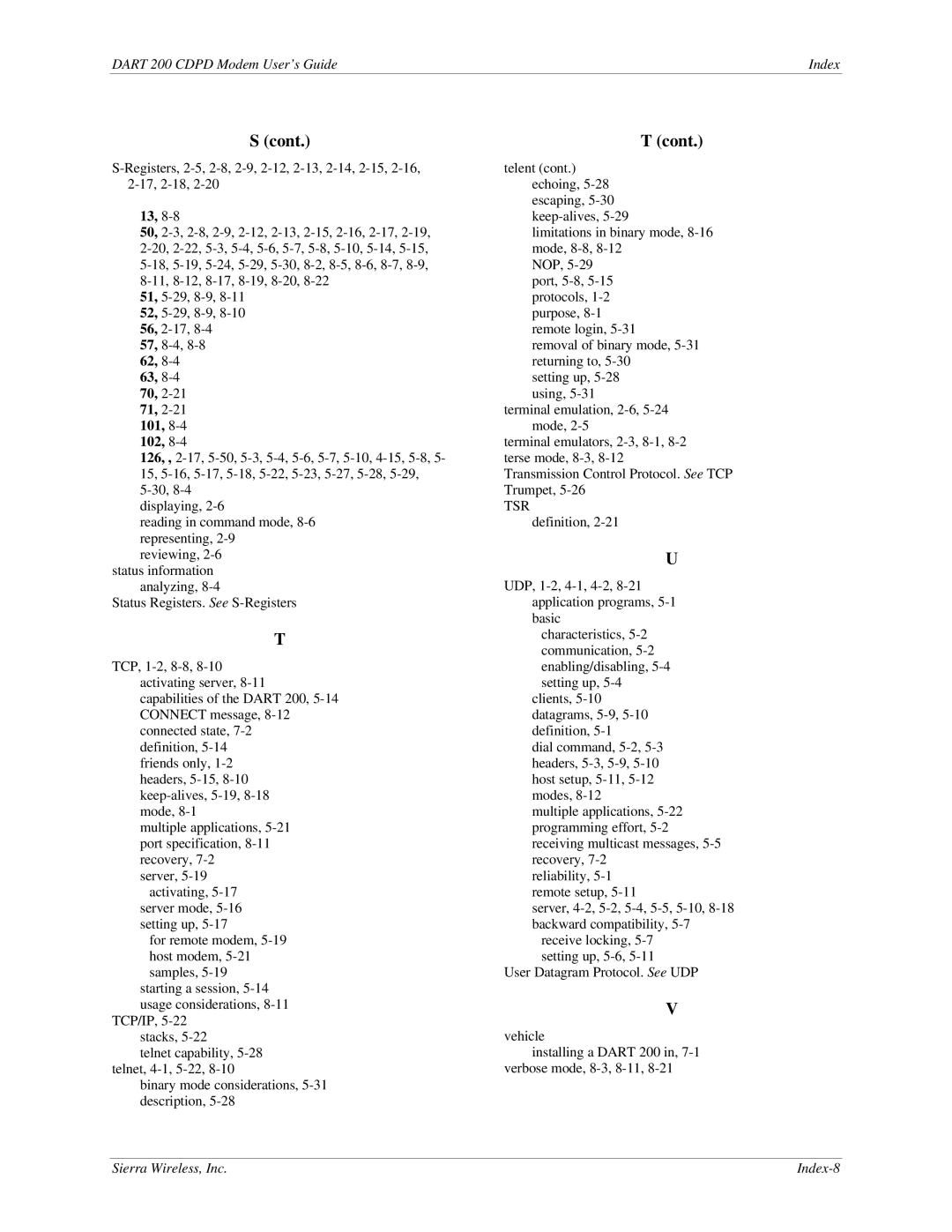DART 200 CDPD Modem User’s Guide | Index |
S (cont.) | T (cont.) |
telent (cont.) | |
echoing, | |
13, | escaping, |
50, | limitations in binary mode, |
mode, | |
NOP, | |
port, | |
51, | protocols, |
52, | purpose, |
56, | remote login, |
57, | removal of binary mode, |
62, | returning to, |
63, | setting up, |
70, | using, |
71, | terminal emulation, |
101, | mode, |
102, | terminal emulators, |
126, , | terse mode, |
15, | Transmission Control Protocol. See TCP |
Trumpet, | |
displaying, | TSR |
reading in command mode, | definition, |
representing, |
|
reviewing, | U |
status information | UDP, |
analyzing, | |
Status Registers. See | application programs, |
| basic |
T | characteristics, |
| communication, |
TCP, | enabling/disabling, |
activating server, | setting up, |
capabilities of the DART 200, | clients, |
CONNECT message, | datagrams, |
connected state, | definition, |
definition, | dial command, |
friends only, | headers, |
headers, | host setup, |
modes, | |
mode, | multiple applications, |
multiple applications, | programming effort, |
port specification, | receiving multicast messages, |
recovery, | recovery, |
server, | reliability, |
activating, | remote setup, |
server mode, | server, |
setting up, | backward compatibility, |
for remote modem, | receive locking, |
host modem, | setting up, |
samples, | User Datagram Protocol. See UDP |
starting a session, |
|
usage considerations, | V |
TCP/IP, | vehicle |
stacks, | |
telnet capability, | installing a DART 200 in, |
telnet, | verbose mode, |
binary mode considerations, |
|
description, |
|
Sierra Wireless, Inc. |
